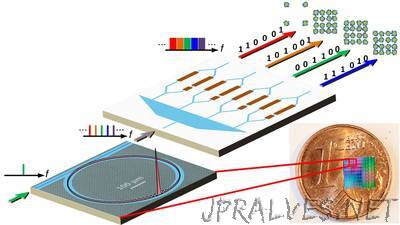
“Researchers at Karlsruhe Institute of Technology (KIT) and École Polytechnique Fédérale de Lausanne (EPFL) have set a new record for optical data transmission: As reported in Nature, the team exploits optical solitons circulating in silicon nitride microresonators to generate broadband optical frequency combs. Two such superimposed frequency combs enable massive parallel data transmission on 179 wavelength channels at a data rate of more than 50 terabits per second. Optical solitons are special wave packages that propagate without changing their shape. In optical communications, solitons can be used for generating frequency combs with various spectral lines, which allow to realize particularly efficient and compact high-capacity optical communication systems. This was demonstrated recently by researchers from KIT’s Institute of Photonics and Quantum Electronics (IPQ) and Institute of Microstructure Technology (IMT) together with researchers from EPFL’s Laboratory of Photonics and Quantum Measurements (LPQM). As reported in Nature, the researchers used silicon nitride microresonators that can easily be integrated into compact communication systems. Within these resonators, solitons circulate continuously, thus generating broadband optical frequency combs. Such frequency combs, for which John Hall and Theodor W. Hänsch were awarded the Nobel Prize in Physics in 2005, consist of a multitude of spectral lines, which are aligned on a regular equidistant grid. Traditionally, frequency combs serve as high-precision optical references for measurement of frequencies. So-called Kerr frequency combs feature large optical bandwidths along with rather large line spacings, and are particularly well suited for data transmission. Each individual spectral line can be used for transmitting a separate data channel.”
